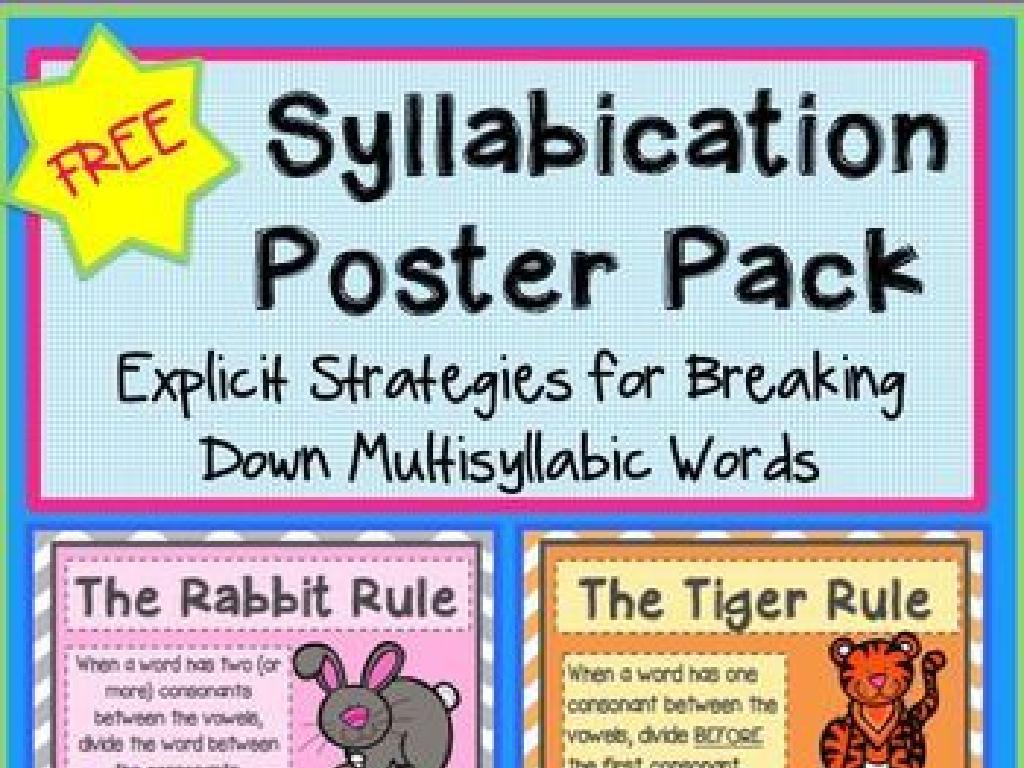Analyze Passages From Narrative Of The Life Of Frederick Douglass: Part 2
Subject: Language arts
Grade: Eighth grade
Topic: Nonfiction Book Study
Please LOG IN to download the presentation. Access is available to registered users only.
View More Content
Exploring Nonfiction: Frederick Douglass
– Introduction to Frederick Douglass
– An influential African-American social reformer, orator, and writer of the 19th century.
– Overview of his Narrative
– A memoir detailing Douglass’s life as an enslaved person and his journey to freedom.
– Grasping Nonfiction
– Nonfiction is factual writing based on real events and people.
– Significance of Nonfiction
– It informs, educates, and can inspire social change.
|
This slide introduces students to Frederick Douglass and his autobiography, ‘Narrative of the Life of Frederick Douglass.’ Begin by discussing Douglass’s role as a key figure in the abolitionist movement, highlighting his skills as a powerful orator and writer. Provide a brief summary of the ‘Narrative,’ emphasizing its significance as a firsthand account of the experiences of an enslaved person in America. Explain the concept of nonfiction, and discuss why it’s an important genre for learning about history and the real world. Encourage students to consider how nonfiction can be a tool for understanding and advocating for social justice. The goal is to set the stage for a deeper analysis of Douglass’s work and its impact on American literature and history.
Understanding Douglass’s World
– Context of Douglass’s era
– Explore the historical backdrop of 19th-century America and slavery.
– Autobiography in nonfiction
– Discuss the characteristics of an autobiography and its truthfulness.
– Main themes in the narrative
– Freedom, human rights, and the power of education as central themes.
– Significance of Douglass’s work
– Douglass’s impact on abolition and modern perspectives on his narrative.
|
This slide aims to provide students with a comprehensive understanding of Frederick Douglass’s life and the significance of his autobiography. Begin by setting the scene of 19th-century America, emphasizing the societal and political conditions, particularly slavery. Explain how autobiographies serve as a personal account of someone’s life and are considered nonfiction. Highlight the main themes Douglass addresses, such as the quest for freedom, the importance of human rights, and the transformative power of education. Discuss Douglass’s role in the abolitionist movement and how his narrative continues to influence discussions on race and justice today. Encourage students to reflect on how the themes in Douglass’s life story relate to current events and societal issues.
Literary Elements in Frederick Douglass’s Narrative
– Key literary elements in nonfiction
– Elements like tone, imagery, and metaphor
– Douglass’s use of elements to convey messages
– Douglass uses strong imagery to depict the hardships of slavery
– Text examples of literary elements
– ‘The warm sunbeam of the sunny morning…’ illustrates use of imagery
– Analyzing the impact on readers
– Consider how Douglass’s choices affect our understanding of his experiences
|
This slide aims to explore the use of literary elements in nonfiction, specifically in ‘Narrative of the Life of Frederick Douglass.’ Students should identify elements such as tone, imagery, and metaphor, and understand how Douglass uses these to enhance his message about the realities of slavery. Provide examples from the text to illustrate these elements in action, such as Douglass’s vivid descriptions of his experiences. Encourage students to analyze how these literary choices impact the reader’s comprehension and emotional response to the narrative. This will deepen their appreciation for Douglass’s skill as a writer and the power of literary techniques in nonfiction.
Analyzing Passages from Frederick Douglass
– Read passages collectively
– Discuss Douglass’s language use
– Explore Douglass’s powerful word choices and rhetoric
– Analyze narrative structure effects
– How does the sequence of events build tension and empathy?
– Understand impact on the reader
– Reflect on how Douglass’s experiences and storytelling affect our emotions and understanding
|
In this slide, we aim to delve deeper into the literary techniques Frederick Douglass uses in his narrative. By reading selected passages together, students can gain a collective understanding and appreciation for the text. The discussion will focus on Douglass’s use of language, looking at specific word choices, metaphors, and rhetorical strategies that convey his experiences and emotions. Analyzing the narrative structure will help students understand how Douglass builds tension, develops characters, and sets the tone to impact the reader. Encourage students to think critically about how the structure and language choices influence their perception of the text and its message. This analysis will help students to not only grasp the historical context but also the power of storytelling in shaping narratives and perspectives.
Themes and Rhetoric in Frederick Douglass’s Narrative
– Explore major themes in the narrative
– Themes of freedom, education, and slavery
– Understand the impact of rhetoric
– Rhetoric uses language to persuade or inform
– Analyze Douglass’s persuasive methods
– Techniques include anecdotes and emotional appeals
– Discuss the effectiveness of his techniques
– Evaluate how Douglass’s style influences readers
|
This slide aims to delve into the deeper meanings and techniques used in Frederick Douglass’s autobiography. Students should explore the recurring themes such as the quest for freedom, the importance of education, and the evils of slavery. They should also understand how Douglass uses rhetoric to effectively communicate his message and persuade his audience. By analyzing his use of personal anecdotes, emotional appeals, and logical arguments, students can gain insight into his persuasive methods. Encourage students to discuss how these techniques contribute to the power of Douglass’s narrative and the overall impact on the reader. This analysis will help students appreciate the art of writing and the historical context of the narrative.
Douglass’s Enduring Legacy
– Historical impact of Douglass’s work
– Douglass’s writings fueled abolitionist movements and reforms.
– Douglass’s narrative and today’s society
– Compare Douglass’s struggles with current social justice issues.
– Personal narratives in social change
– Personal stories like Douglass’s can inspire and mobilize communities.
– Reflect on Douglass’s influence
|
Frederick Douglass’s autobiography had a profound effect on American society, particularly in the context of the abolitionist movement. His eloquent and powerful descriptions of the horrors of slavery helped to change public opinion and were instrumental in the fight for abolition. In this lesson, students will explore the historical significance of Douglass’s work and draw parallels to modern-day social issues, understanding how personal narratives can still serve as a catalyst for change. Encourage students to think critically about how the themes in Douglass’s narrative are reflected in today’s world and the role that personal storytelling plays in contemporary social movements.
Role-Play Activity: Stepping into History
– Role-play a scene from Frederick Douglass’s narrative
– Discuss characters’ emotions and motivations
– Why did the characters feel and act this way?
– Reflect on portraying a historical figure
– How does it feel to ‘become’ someone from the past?
– Share insights from the role-play experience
|
This class activity involves students in role-playing to help them understand the historical context and emotional landscape of ‘Narrative of the Life of Frederick Douglass.’ By acting out scenes, students will explore the motivations and feelings of the characters, gaining a deeper understanding of the narrative. Encourage students to reflect on the experience and consider the perspectives of the individuals they portray. Possible role-play scenes could include Douglass’s thoughts on learning to read, his interactions with other enslaved individuals, or his contemplation of freedom. This activity will foster empathy and a personal connection to the historical content.
Conclusion & Reflection on Frederick Douglass
– Summarize today’s key points
– Share your personal reflections
– What stood out to you in today’s lesson?
– Homework: Reflective essay assignment
– Write an essay on Douglass’s story impact
– Impact of Douglass’s narrative
– How does Douglass’s journey resonate today?
|
As we wrap up today’s lesson, encourage students to think about the main themes and messages from the Narrative of the Life of Frederick Douglass. Ask them to share any insights or questions they have about the material covered. For homework, they are to write a reflective essay on how Douglass’s experiences and his fight for freedom have impacted their understanding of history and its relevance to current events. This exercise aims to deepen their comprehension and personal connection to the text. Provide guidance on essay structure and examples of reflection questions to consider. Encourage them to draw parallels between Douglass’s life and modern struggles for justice and equality.





